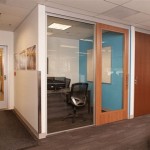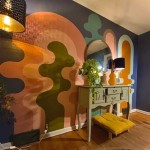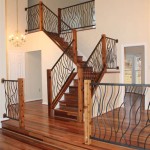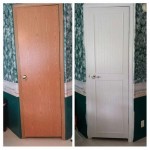What Are Accessories in Interior Design?
Interior design is a multifaceted discipline encompassing space planning, material selection, color palettes, and furniture arrangement. However, the true essence of a well-designed space often lies in the carefully curated details that add personality, character, and functionality. These details are broadly categorized as accessories, and they play a crucial role in transforming a house into a home, or an office into a productive and inviting workspace.
Accessories in interior design are the supplementary items that enhance the aesthetics, functionality, and overall atmosphere of a space. They are typically removable and replaceable, offering flexibility for seasonal updates or stylistic changes without significant structural alterations. Unlike fixed elements like walls, flooring, and built-in cabinetry, accessories are mobile and adaptable, allowing for personalization and expression of individual preferences.
The selection and placement of accessories is a critical aspect of the interior design process. They should complement the existing design scheme, reinforce the desired style, and contribute to the overall balance and harmony of the space. Effective use of accessories can elevate a room from being merely functional to being visually appealing, comfortable, and reflective of the occupant's personality.
Types of Accessories in Interior Design
The range of items that fall under the umbrella of "accessories" in interior design is quite extensive. They can be broadly categorized based on their function, material, or aesthetic style. Here's an overview of some common types of accessories:
Decorative Objects: This category encompasses items primarily intended for aesthetic appeal. These include sculptures, figurines, decorative bowls, vases, and other ornamental objects. The material choices are diverse, ranging from ceramics and glass to metal, wood, and natural stone. The selection of decorative objects should align with the overall design theme and color palette of the room. A modern minimalist space might feature geometric sculptures or abstract art, while a traditional setting could incorporate antique figurines or decorative plates.
Textiles: Textiles play a vital role in adding texture, color, and warmth to a space. Cushions, throws, rugs, and curtains are all considered accessories within interior design. Cushion covers can be easily swapped to reflect seasonal changes or personal preferences, adding a pop of color or a touch of pattern to a sofa or armchair. Throws provide an extra layer of comfort and visual interest, draped over furniture or neatly folded in a basket. Rugs define spaces, add softness underfoot, and anchor furniture arrangements. Curtains control light and privacy while also contributing to the aesthetic appeal of a room.
Wall Decor: The walls of a room provide ample opportunity for adding personality and visual interest through various forms of wall decor. Paintings, prints, photographs, mirrors, and tapestries are all common choices. Paintings and prints can introduce color, texture, and artistic expression to a space. Photographs personalize the room by showcasing cherished memories and experiences. Mirrors reflect light, creating the illusion of a larger space, and can also serve as a decorative element. Tapestries add texture and visual depth, often featuring intricate patterns or historical motifs.
Lighting: While fixed lighting fixtures are an integral part of the architectural design, portable lamps are considered accessories. Table lamps, floor lamps, and desk lamps provide task lighting, ambient lighting, and accent lighting, enhancing the functionality and atmosphere of a space. The style and finish of the lamps should complement the overall design scheme. A modern space might feature sleek, minimalist lamps with metallic finishes, while a traditional setting could incorporate ornate lamps with fabric shades.
Greenery: Plants and flowers bring life, freshness, and a touch of nature into indoor spaces. Potted plants, flower arrangements, and even artificial greenery can enhance the visual appeal and air quality of a room. The type of plant should be chosen based on the light conditions and maintenance requirements of the space. A minimalist approach might feature a single statement plant in a sculptural pot, while a more eclectic style could incorporate a variety of plants in different sizes and textures.
Storage Solutions: While primarily functional, storage solutions can also serve as decorative accessories. Baskets, boxes, trays, and decorative containers can be used to organize clutter and add visual interest to shelves, tables, and countertops. The material and style of the storage solutions should complement the overall design scheme. Woven baskets add texture and warmth to a space, while metal containers offer a sleek and modern look.
The Role of Accessories in Achieving Design Goals
Accessories are not merely decorative embellishments; they serve a vital role in achieving specific design goals and enhancing the overall experience of a space. Their impact can be significant, influencing the mood, functionality, and perceived value of a room.
Reinforcing Style and Theme: Accessories are instrumental in reinforcing the chosen style and theme of a space. They can create a cohesive and unified look, tying together different elements and ensuring that the design is consistent and intentional. For example, a coastal-themed room might feature seashells, nautical artwork, and blue and white textiles, while a bohemian-inspired space could incorporate macrame wall hangings, colorful cushions, and vintage rugs.
Adding Personality and Character: Accessories provide an opportunity to inject personality and character into a space, reflecting the individual tastes and preferences of the occupants. By carefully selecting items that resonate with their interests and passions, designers can create a space that feels personal, unique, and authentic. This could include displaying collections of books, showcasing travel souvenirs, or incorporating artwork created by local artists.
Creating Focal Points: Strategic placement of accessories can create focal points within a room, drawing the eye and adding visual interest. A large piece of artwork, a statement mirror, or a dramatic floral arrangement can serve as a focal point, anchoring the space and creating a sense of balance. By varying the size, scale, and color of accessories, designers can guide the viewer's gaze and create a dynamic and engaging visual experience.
Enhancing Functionality: Many accessories serve a dual purpose, providing both aesthetic appeal and practical functionality. Storage baskets can organize clutter, lamps provide task lighting, and throws offer warmth and comfort. By carefully considering the functional needs of the space, designers can select accessories that enhance its usability and convenience.
Adding Texture and Depth: Accessories contribute significantly to the overall texture and depth of a space. By incorporating a variety of materials, patterns, and finishes, designers can create a more visually interesting and tactile environment. This could include layering different textures, such as a velvet cushion on a linen sofa, or adding a patterned rug to a neutral-toned room.
Principles of Accessory Selection and Placement
Selecting and placing accessories effectively is a skill that requires careful consideration and attention to detail. There are several key principles that designers and homeowners should keep in mind to achieve a balanced, harmonious, and visually appealing result.
Balance and Proportion: Maintaining balance and proportion is crucial in creating a visually pleasing arrangement. Consider the size, shape, and weight of accessories in relation to the surrounding furniture and architectural elements. Avoid overcrowding a space with too many small items or overwhelming it with a few large pieces. Strive for a balance between vertical and horizontal elements, as well as between light and dark colors.
Color Harmony: Accessories should complement the existing color palette of the room. Choose colors that are either harmonious or contrasting, depending on the desired effect. Harmonious colors create a soothing and cohesive atmosphere, while contrasting colors add vibrancy and visual interest. Consider using a color wheel to identify complementary or analogous colors that work well together.
Layering and Grouping: Layering and grouping accessories can add depth and visual interest to a space. Group items of varying heights, shapes, and textures together to create a dynamic and engaging arrangement. Layer rugs, cushions, and throws to add warmth and comfort. Consider the principle of the "rule of three," grouping items in odd numbers for a more visually appealing composition.
Negative Space: Don't underestimate the importance of negative space. Allowing some areas of a room to remain uncluttered and empty can create a sense of calm and balance. Avoid filling every available surface with accessories. Leave some breathing room to allow the eye to rest and appreciate the individual items.
Functionality: Always consider the functionality of accessories when making your selection. Choose items that not only enhance the aesthetics of the space but also serve a practical purpose. This will ensure that the accessories are both beautiful and useful.
Personal Expression: Ultimately, the selection and placement of accessories should reflect your personal tastes and preferences. Choose items that you love and that bring you joy. Don't be afraid to experiment and create a space that is uniquely your own.

Importance Of Accessories In Interior Design Foyr

Using Home Accessories Wisely Elevating Your Space
Why Are Accessories Important In Interior Design Eps Industries

Room Accessories Jane Lockhart Design

Importance Of Accessories In Interior Design Foyr

Accessorize A Room With These 10 Things For Curated Look Stonegable

Home Decor Functional Accessories Rv Concepts

Room Accessories Jane Lockhart Design

Decorative Accents And Accessories In Interior Design Fabcuro

Importance Of Accessories In Interior Design Foyr
Related Posts








